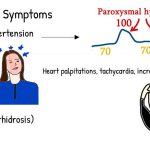
Contents
- 1 Metronidazole (Flagyl) vs. Fluconazole (Diflucan)
Metronidazole (Flagyl) vs. Fluconazole (Diflucan)
Metronidazole is an antibiotic used to treat bacterial vaginosis, trichomonas vaginal infections, carriers of trichomonas (both sexual partners) who do not have symptoms of infection, Giardia infections of the small intestine, amebic liver abscess, amebic dysentery (infection of the colon causing bloody diarrhea), abscesses (in the liver, pelvis, abdomen, and brain, C. difficile, Helicobacter pylori (H. pylori), acne rosacea, and metronidazole vaginal gel is used to treat bacterial vaginosis.
Fluconazole is an antifungal medication used for treating vaginal, oral, and esophageal fungal infections caused by Candida. Diflucan also may be effective in treating urinary tract infections, peritonitis, pneumonia, and disseminated infections caused by Candida. Diflucan is also used for treating cryptococcal meningitis, and prevention of Candida infections in patients treated with chemotherapy or radiation after bone marrow transplantation.
QUESTION
What are the side effects of metronidazole and fluconazole?
Metronidazole side effects
Flagyl is a useful antibiotic and is generally well tolerated with appropriate use.
The most common and minor side effects include:
- Nausea
- Headaches
- Loss of appetite
- A metallic taste
- Rarely a rash
- Abdominal cramps
- Vomiting
- Diarrhea
- Dry mouth
- Dark-colored urine
- Metallic taste in mouth
- Weight loss (anorexia)
- Dizziness
- Constipation
- Furry tongue
- Rash
- Nasal congestion
- Flushing
- Vaginal dryness
Side effects that are uncomfortable, but may become serious include:
- Brain disease
- Fevers
- Mouth sores
- Pain with urination
- Prickling or tingling sensations that may become permanent
- Cystitis
- Pelvic pain or pressure
- Decrease of libido
- Proctitis
- Stomitis
- Glossitis
Serious side effects of Flagyl are rare and the drug should be stopped if these symptoms appear:
- Seizures
- Damage of nerves resulting in numbness and tingling of extremities
- Peripheral neuropathy
- Encephalopathy
- Aseptic meningitis
- Asceptic meningitis
- Colon cancer in people with Crohn’s disease
Fluconazole side effects
Common side effects of fluconazole include:
Other important side effects include:
- Diarrhea
- Dyspepsia
- Dizziness
- Reduced blood levels of potassium
- Rash
- Taste disturbance
Possible serious side effects include:
- Seizures
- Reduced number of white blood cells
- Reduced number of blood platelets
- Toxic epidermal necrolysis
Rarely, serious allergic reactions, including angioedema (swelling of tissues), may also occur. Liver dysfunction (jaundice, hepatitis) and abnormal heartbeats have been associated with fluconazole. Stevens-Johnson syndrome has also been reported.
What is the dosage of metronidazole vs. fluconazole?
Metronidazole dosage
- Metronidazole may be taken orally with or without food.
- In the hospital, metronidazole can be administered intravenously to treat serious infections.
- The liver is primarily responsible for eliminating metronidazole from the body, and doses may need to be reduced in patients with liver disease and abnormal liver function.
Various metronidazole regimens are used. Some examples are listed below.
- Amebic dysentery: 750 mg orally 3 times daily for 5-10 days
- Amebic liver abscess: 500-750 mg orally three times daily for 5-10 days
- Anaerobic infections: 7.5 mg/kg orally or by injection every 6 hours for 7 to 10 days not to exceed 4 grams daily.
- Bacterial vaginosis: 750 mg (extended-release tablets) once daily for 7 days or 500 mg twice daily for 7 days or 2 g single dose or one applicator-full of 0.75% vaginal gel, once or twice daily for 5 days.
- Clostridium difficile infection: 250-500 mg orally 4 times daily or 500-750 orally 3 times daily
- Giardia: 250 mg orally three times daily for 5 days Helicobacter pylori: 800-1500 mg orally daily for several days in combination with other drugs.
- Pelvic inflammatory disease (PID): 500 mg orally twice daily for 14 days in combination with other drugs.
- Trichomoniasis: 2 g single dose or 1 g twice
- Rosacea: apply topical gel 0.75-1% once daily
Fluconazole dosage
- The usual adult dose is 50-400 mg daily depending on the type of infection. Although symptoms of oral Candida infections may subside in a few days, treatment is continued for 2 weeks.
- Esophageal Candida infections are treated for 3 weeks or longer.
- Treatment of cryptococcal meningitis may last for 10-12 weeks after cerebrospinal fluid cultures become negative.
What drugs interact with metronidazole and fluconazole?
Metronidazole drug interactions
- Alcohol should be avoided because metronidazole and alcohol together can cause severe nausea, vomiting, cramps, flushing, and headache.
- Metronidazole can increase the blood-thinning effects of warfarin (Coumadin, Jantoven) and increase the risk of bleeding probably by reducing the breakdown of warfarin.
- Cimetidine (Tagamet) increases blood levels of metronidazole while cholestyramine (Questran, Questran Light) reduces blood levels of metronidazole by reducing its absorption.
- Metronidazole should not be combined with amprenavir (Agenerase) for treating human immunodeficiency disease (infection with HIV) because amprenavir contains propylene glycol.
- Metronidazole blocks the breakdown of propylene glycol in the liver leading to accumulation of propylene glycol in blood. Accumulation of propylene glycol could cause seizures, increased heart rate, and lead to kidney failure.
- Metronidazole increases the blood levels of carbamazepine (Tegretol, Tegretol XR, Equetro, Carbatrol), lithium (Eskalith, Lithobid) and cyclosporine though unknown mechanisms. Serious reactions may occur if these drugs are taken with metronidazole.
Fluconazole drug interactions
- Hydrochlorothiazide increases the blood concentration of fluconazole by 40%. However, dosage modification is not recommended when both drugs are combined.
- Rifampin (Rifadin, Rimactane, Rifadin, Rifater, Rifamate) reduces the blood concentration of oral fluconazole, probably by increasing the elimination of fluconazole in the liver; therefore, reducing the effectiveness of fluconazole.
- Fluconazole may increase the concentration of warfarin (Coumadin, Jantoven) in blood by reducing the elimination of warfarin. Therefore, the effect of warfarin may increase, leading to an increased tendency to bleed.
- Fluconazole also increases the concentration of the following drugs in the blood, and as a result, the risk of side effects of these drugs may increase. These drugs include:
- phenytoin (Dilantin),
- cyclosporine,
- zidovudine (Retrovir),
- saquinavir (Invirase),
- theophylline (Theo-Dur, Respbid, Slo-Bid, Theo-24, Theolair, Uniphyl, Slo-Phyllin),
- tolbutamide,
- glyburide (Micronase, Diabeta, Glynase),
- glipizide,
- triazolam (Glucotrol),
- midazolam (Versed),
- celecoxib (Celebrex),
- fentanyl (Sublimaze),
- atorvastatin (Lipitor),
- simvastatin (Zocor), and
- lovastatin (Mevacor).
Combining fluconazole with amiodarone (Cordarone), pimozide (Orap), bepridil (Vascor) or other drugs that affect heart rhythm may increase the risk of abnormal heart rhythms.
By clicking Submit, I agree to the MedicineNet’s Terms & Conditions & Privacy Policy and understand that I may opt out of MedicineNet’s subscriptions at any time.
Are metronidazole and fluconazole safe to use while pregnant or breastfeeding?
Metronidazole
- Metronidazole is not used in early pregnancy because of potential adverse effects on the fetus.
- Metronidazole is excreted in breast milk. Females who are nursing, because of potential adverse effects on the newborn, should not use metronidazole.
Fluconazole
- There are no adequate studies of Diflucan in pregnant women. There are reports of harmful effects to the fetus when high dose fluconazole was administered to pregnant women for a few months. Use of fluconazole during pregnancy is not recommended.
- Diflucan is secreted in breast milk at concentrations similar to the mother’s blood level. However, fluconazole is used for treating neonates with fungal infections and for treating lactation associated Candida infections. Available evidence suggests that use of fluconazole during breastfeeding has little risk.
Summary
Metronidazole and fluconazole are used to treat different types of vaginal infections. Metronidazole is an antibiotic used to treat bacterial vaginosis and trichomonas vaginal infections, and fluconazole is an antifungal used to treat vaginal fungal infections caused by Candida.


